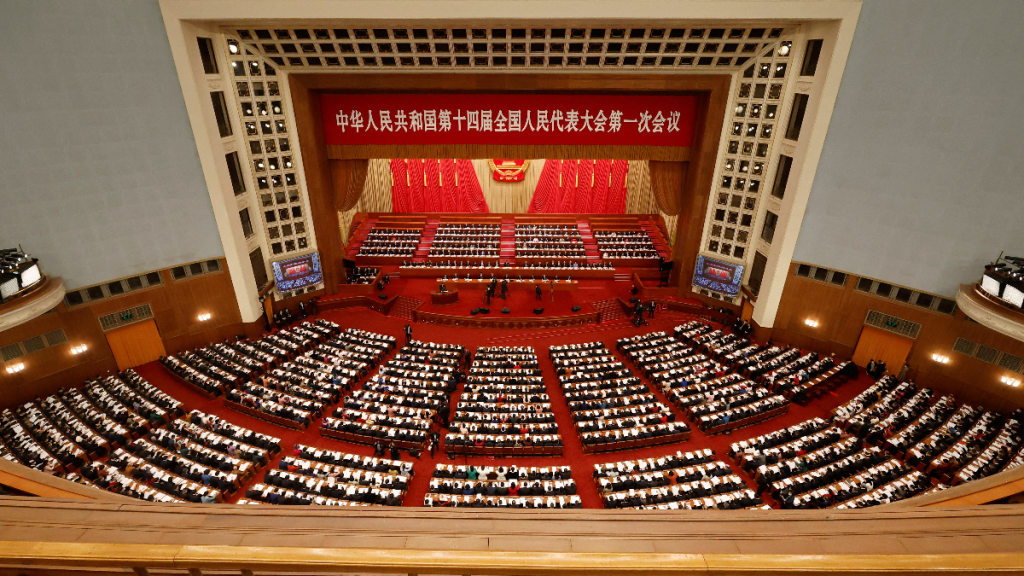
China has unveiled plans for a sweeping central government reorganisation at its annual parliament session, including the formation of a financial regulatory body and national data bureau and a revamp of its science and technology ministry.
Here are the main changes and what they mean.
WHAT DOES THE RESTRUCTURING INVOLVE?
A new national financial regulatory administration will replace the existing banking watchdog and bring supervision of the industry, apart from the securities sector, into a body directly under the State Council, or cabinet. The securities regulator will also be overseen directly by the State Council.
“Financial regulators are upgraded in this sense,” Citi analysts wrote. “Regulatory loopholes under multiple regulators may be closed further with the establishment of the new organ.”
The reform is intended to further consolidate financial regulation under one government body instead of across different institutions.
The science and technology ministry will be restructured to channel more resources to achieving breakthroughs, with the goal of moving faster towards self-reliance, according to a State Council plan submitted to parliament.
The ministry reform aims to “accelerate the realisation of high-level scientific and technological self-reliance” in response to “the severe situation of international scientific and technological competition as well as external containment and suppression”, the cabinet said.
The restructured ministry will be overseen by a newly created Communist Party body, the Central Science and Technology Commission, strengthening party oversight of science and technology policy.
A new national data bureau will be responsible for coordinating the sharing and development of data resources, as well as planning the digital economy and promoting initiatives. It will be overseen by the National Development and Reform Commission, or state planner.
The official headcount of central government organs will also be slashed by 5% to divert excess personnel towards “key areas and important work”, the State Council said.
WHY NOW?
The plan for the reform of party and state bodies was approved at last October’s Communist Party congress, although few details were released until this week, with the publicly announced reforms mostly limited to government bodies.
The National People’s Congress (NPC), the top legislature, is expected to adopt the reforms on Friday.
President Xi Jinping said during a meeting of the party’s Central Committee last week that reforms would be “intensive” and “wide-ranging”.
The reforms will also “strengthen the centralised and unified leadership of the Party Central Committee as the pivot” and “improve the coordinating institutions for the Party Central Committee’s decision-making on and deliberation of state affairs”, according to a summary of the meeting.
WHAT IS THE SIGNIFICANCE?
The restructuring is the biggest since 2018, when a shakeup affected more than 1.8 million staff at dozens of government entities, state media reported. As part of those reforms, the National Supervisory Commission was formed to oversee anti-corruption work.
The new reforms reflect China’s most pressing priorities: scientific and technological self-reliance and innovation in the face of mounting rivalry with the United States that threatens to curb China’s domestic chip development; reining in large corporate and financial institutions under a single regulatory authority to reduce systemic risks; and strengthened data governance.
“Regulatory policies will be clearer, more unified and coordinated” under the new financial regulator, said a senior researcher at a state-owned bank on condition of anonymity.
The central bank’s regulatory duties will focus on monetary policy, “macro regulation and policy implementation, not day-to-day micro regulation”.
The creation of the data bureau reflects growing anxieties that unchecked data collection by private firms and cross-border data transfer could pose national security risks.
Since taking power in 2012, Xi has established several new central party committees overseeing multiple ministries, which report directly to him.
Analysts say this has gradually changed the governance structure within the party-state system to reflect more centralised, top-down policymaking with more power concentrated in Xi’s hands.
WHAT HAPPENS NEXT?
Analysts expect the party reforms to be revealed soon after the NPC concludes its meetings on Monday.
“The broad trend we are expecting is the party’s continued cannibalisation of the State Council apparatus. Which means party organs’ restructuring will carry greater weight than State Council’s,” said Wen-Ti Sung, a political scientist at the Australian National University.
A top-level party financial watchdog, the Central Financial Work Commission, is likely to be resurrected after the NPC, sources earlier told Reuters. It will be headed by a member of the elite seven-member Politburo Standing Committee, the sources said.
BEIJING (Reuters)
Inside Telecom provides you with an extensive list of content covering all aspects of the Tech industry. Keep an eye on our News section to stay informed and updated with our daily articles.